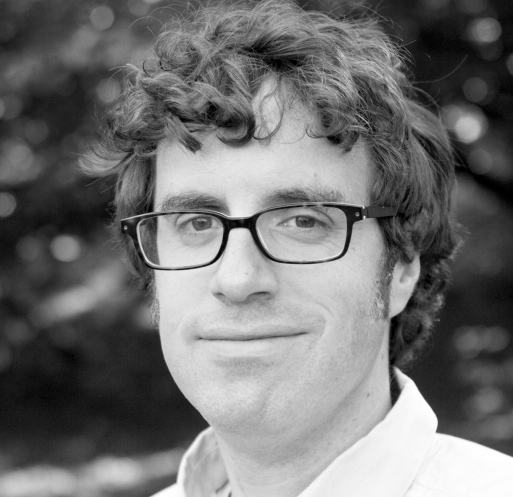A Hollywood director couldn’t have scripted a more compelling (and stereotypical) clash between two sets of journalistic beliefs than this month’s battle between the staff of The New Republic and its owner Chris Hughes. On the one side, a deep commitment to humanistic inquiry embodied in the liberal arts. On the other, the data-oriented, metric- and innovation-obsessed culture of Silicon Valley. If a “liberal arts” perspective on politics and intellectual life can be defined, in the helpful words of New York Times columnist Ross Douthat, as a refusal of “the delusion…that today’s fashions represent permanent truths,” than we should expect this journalistic battle to accelerate on the year to come.
But it also might not matter — because while the cultural commentariat tweets its dismay (at either the cluelessness of the elbow-patch wearing literary crowd or the disruption-minded buffoonery of the entrepreneurs of the Valley), other writers and editors are plotting new ways to rethink the journalistic embrace of what I like to call “slow thinking.” These writers and editors, at publications large and small, will help point toward a synthesis of old and new journalistic cultures in the year ahead.
 Full disclosure: I personally have a great deal of sympathy with the more considered (some might say more ponderous) and certainly more historically inclined journalism that was once embodied (though not embodied all that well for many decades) by magazines like The New Republic. But there are two problems with this culture of literary pretension. The first might be called the canonical backlash problem; the second has to do with cult of metrics and money that dominates so much journalism today.
Full disclosure: I personally have a great deal of sympathy with the more considered (some might say more ponderous) and certainly more historically inclined journalism that was once embodied (though not embodied all that well for many decades) by magazines like The New Republic. But there are two problems with this culture of literary pretension. The first might be called the canonical backlash problem; the second has to do with cult of metrics and money that dominates so much journalism today.
First, the canonical backlash: No one who was on a college campus in the 1990s can fail to appreciate Ta-Nehisi Coates’ evisceration of the racial politics of The New Republic as anything other than a most welcome extension of the battles over “the canon” and “representation” that have dominated university life for the past three decades. The “liberal arts” embodied by magazines like TNR is my white, male, Protestant liberal arts; it is not the culture and art of most of America today, never mind the majority of the globe. And thus, even the most ardent defenders of The New Republic this month had to admit that, well, it was all fairly musty smelling, wasn’t it? Disruption might do it some good.
The second problem is deeper and more systemic. It is not the existence of reader data and user metrics that threatens slower, more considered, more humanistically inclined journalistic endeavors. Rather, it is the managerial and organizational culture that so often surrounds and interprets these metrics. It is less that, in and of themselves, metrics, audience trackers, and the ability to measure how well stories travel threatens the values of journalism. The problem is rather the way we have come to uncritically vaunt and value the importance of numbers, the expectations that we have of them, and the way our embrace of audience data under the rubric of democracy and empowerment often disguises a bluntly economic imperative. Data is not the problem — it’s the way we talk about data. And this obsession with the quantitative is, of course, the exact problem that the increasingly threatened liberal arts were built to solve.
Still, all is not lost. For even as some might wail and bemoan the fact that so much of journalistic production now exists in present tense, increasingly measured in clicks and retweets, new publications are being born that have done a lot to solve the canon problem — even if they’ve yet to fully come to terms with the larger problem of economics disguised as user empowerment. Indeed, Nieman Lab did a thoughtful series on them back in September. They are the so-called new little magazines: The New Inquiry, n+1, The Baffler, Jacobin, Blunderbuss, and Cato Unbound. These magazines have increasingly moved beyond the campus culture wars, synthesizing the best of the classic liberal arts canon with a deliriously diverse range of literary, philosophical, and historic sources, all for the purpose of shining light on present-day political and intellectual problems. “Liberal arts journalism” is not dead, or even dying. It might actually be more robust than ever.
And yet. The economic problems, the data problems, the audience quantification problems remain unsolved. Indeed, they are the economic facts of life for any modern-day publisher, no matter how little their magazine or diverse their sources of artistic inspiration. The way that a culture of measurement, quantification, and virality can coexist with an intellectual culture that takes a more deliberate, longer-term view of political and intellectual life is a problem that is likely to outlast many of the publications I have mentioned here. But if the problem is ever to be tamed, it will in part be tamed by the journalists and publishers working for these little magazines: magazines that still somehow manage to care about slow ideas and silent thought in an era of speed.
C.W. Anderson is an associate professor of media culture at the City University of New York.